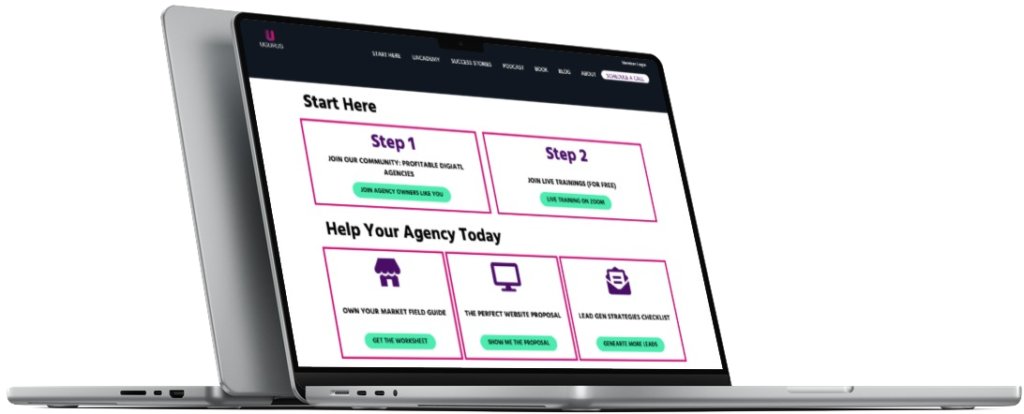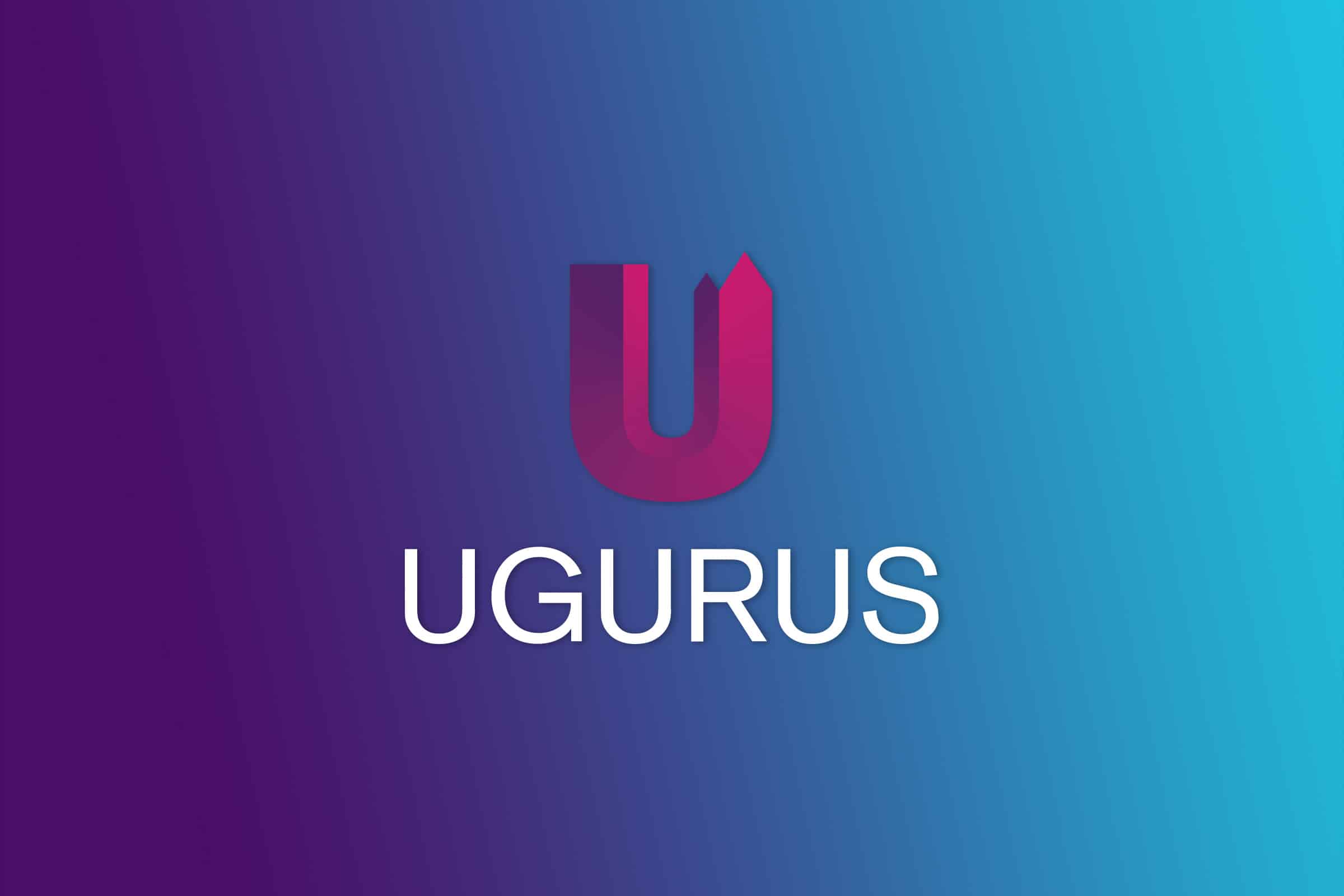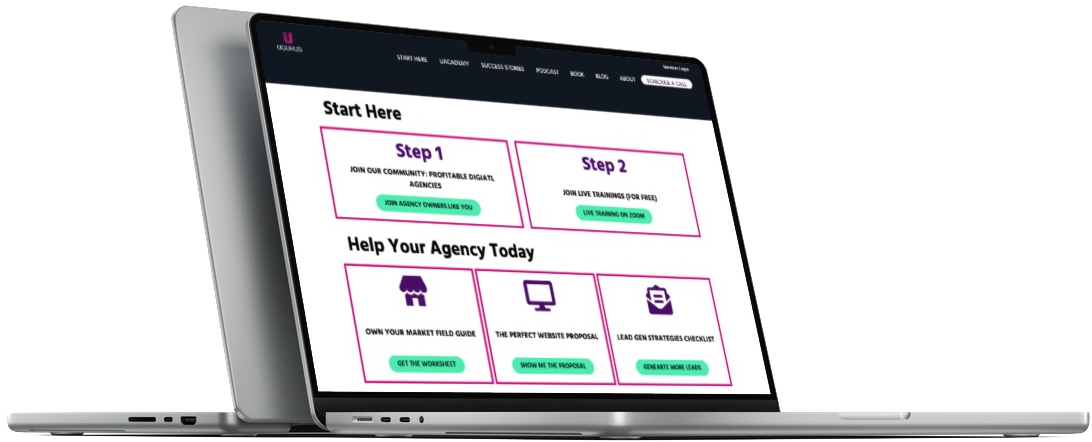VP of Strategy for Denver-based Fusionbox, Ivy Hastings, sits down with me to discuss their agency, Python, and their dedication to the open source community.
Fusionbox has been creating result-driven interactive solutions for their clients since 2001. Ivy joined the team in 2003. Ivy helps educate clients on how to create long lasting strategies in order to thrive by doing more than just creating good looking websites. After giving us a tour around their open, brick-exposed, modern row style office, we sat down to talk about what their agency is all about.
You can find more information about Ivy Hastings and Fusionbox by visiting their blog, website, and following them on Facebook and Twitter.
Video Transcript
Brent: I’m Brent Weaver and you’re watching You Gurus, most-watched web series on how to become a more profitable and in-demand web professional. Today I’m at Fusionbox here in Denver, Colorado, and I’m hanging out with their VP of strategy, Ivy Hastings. Welcome to the program.
Ivy: Thanks, thanks for having me.
Brent: So tell us about Fusionbox. Where does Fusionbox start and what do you guys do?
Ivy: So we started in 2001. Our founder and president, Alexander Groth, is a programmer by trade. So he was a programmer working for a start-up, working on a big $30 million project that blew up, basically. And so he saw a lot of ways to solve a lot of need. The web wasn’t going away, it was getting bigger. Business were going to need software, they were going to need custom work, they were going to need advice, guidance, good technology. So he kind of saw an opportunity there, started Fusionbox, and from there we’ve just grown over time.
Brent: Who is a typical customer of Fusionbox?
Ivy: You know, we get a lot of clients that have software problems that they need to solve that maybe they haven’t been through that work before, so they need someone with really good, solid coding practices, great developers. And kind of an approach, we call it a “design build” approach, so we borrow from architecture terms there. Where we’re helping blueprint a solution, design it, do the UI/UX, build it and everything’s very integrated. We kind of take it beyond actually the “building of the house”
metaphor and then measure the work after it’s been completed.
Brent: Do you guys consider yourself more of a custom development shop or kind of a service shop? How do you guys classify your business?
Ivy: So we do a lot of custom development that is meant to solve business needs and build business. So a lot of our work is meant to increase leads, increase customer engagement, and just help our clients work through how they’re going to use the web to build business. It’s kind of coming up with those big idea solutions.
Brent: So companies that need custom solutions, need help to build their business, where do you guys find these customers? How do you get your typical customer at Fusionbox?
Ivy: We’ve been around for awhile, so we’re somewhat known. We also, because we actually work with clients to help them with their own marketing, we kind of take our own medicine there. So we have great SEO presence, SEM presence. So we actually get a lot of leads. Our business development isn’t all that active, so we have clients seeking us out every day.
Brent: On the SEO and SEM front for your business, any tips on strategy, how you guys have made that effective? I know a lot of people, web companies, are very competitive in that space. So how have you guys made that be a sensible strategy for your business?
Ivy: It’s interesting, when I first started, I had never really done sales. I started here in 2003. So I started doing cold calls, networking, wasn’t working. So I’m like, “We really need to work on our own ranking. So we are not sitting around waiting for the phone to ring, right?” So I just started to learn about it and work on our own results and it’s really been building value for our target audience. So we’ve always taken the approach that if it’s good for your users, it’s good for your SEO presence. So we’ve built quality content, solid code, continued to build natural links. We’ve never done anything spammy, ever, ever. We’ve never bought links, we’ve never taken content and recycled it. We’ve always done good, original content. So we’ve never been hurt by any of the algorithm updates. None of it’s a mystery, Google tells us all of this. So we just follow what they say and not try to trick it, because that’s risky. So that’s had great results. And then you know, measuring what’s working, testing, kind of having good messaging, having a good site experience.
Brent: So you guys really focus a lot of your marketing efforts really on the same stuff that you build for customers? You’re building a good website, building good conversion, building good SEO and search marketing type stuff. Have you done anything in the social space? Because you know, just talking to other web companies, I’ve seen, probably shamefully, very little attraction in that space. Maybe a couple of companies per city are doing well in SEO, sounds like you guys are one of those companies. Are you doing anything on the social side for Fusionbox?
Ivy: You know, we know social’s important to Google’s ranking algorithm. We do some of it. We don’t put a lot of stock in that in terms of creating business. It’s a different audience that’s going to be looking at Facebook. We know it’s important to ranking so we have activity there, but it’s more to connect to potential hires, to people who are watching us, to the community. That’s how we use it. But we do have presence there for sure. And we help our clients with that as well, so kind of figuring out what they need to do. So we need to be a model for that and do our own testing there.
Brent: In terms of the makeup of Fusionbox, how big are you guys and what’s the specific disciplines of team? Just give me a broad overview.
Ivy: Sure. So we’re 15, so we have project management, QA, design UI/UX design, our designers do our front-end development so that’s pretty interesting integrated approach. It means that we don’t have a lot of disconnect where some agencies have disconnect between what creative’s doing and what really works on the web in terms of usability and browser compliance. So we’re pretty development-heavy. We have some team members who are working kind of outsource, we have some distributed workforce who are Python developers, top of their field in Spain, in China, kind of across the world. But we have a pretty big development team here as [five].
Brent: So I don’t hear about Python very often in the web space. So why Python and how have you guys made that work for you?
Ivy: Yeah, so really it came from our developers. They were doing PHP and they said, “We want to do Python.” And we said, “If that’s where you’re going to be happy, let’s do it. Go for it.” And really, clients, we haven’t had any problems with that, really. They trust us to make a good decision, they aren’t pushing for another language. And it’s really opened opportunities for us in the open source community in terms of the Python community and clients who are actually seeking out Python. So it’s been fun, it’s been interesting, it’s different. Some people say, “Python?” You know, “That’s different.” So it’s kind of fun.
Brent: I mean, I’ve found the more niche your technology or your customer group is, there’s a lot of different ways to slice that. But when you find those really specific niches, that can kind of make you a magnet for very specific requests. Like I said, you guys are really good at Python and you get a Python request, it really matters less about what the request is, you have that commonality with it, you know?
Ivy: Right. They know we can build it. And clients are interested in that language because of its precision and because maybe it’s a little bit different. And they know that Python developers tend to be very serious, very talented developers. And so that is interesting to them, that they can get kind of the top level programmers. There’s maybe more barriers to entry to Python than there is to a designer teaching themselves PHP or something like that.
Brent: When I hear a distributor workforce, I don’t know, the recent book by the 37Signals guy, remote comes up to mind. Obviously, you guys are practicing some level of online collaboration with that kind of team. I mean, it sounds like you’ve gone out and found the best talents, no matter where they are, versus trying to find local talent here.
Ivy: I mean, the local talent, it’s difficult to find. So we’re looking for someone who’s interested in open source, very good object oriented principles, very smart, really wanting to learn. And if they want to learn Python, they can do that here. They don’t have to come in with Python. And you know, it’s hard to recruit, everybody has those same issues in our industry here in Denver. That’s why we seek out talent elsewhere, and they work for us, they just work elsewhere. So we do that, so we have some UI/UX talent in terms of design as well, that are local that just don’t work in our office every day.
Brent: Sure, and you mentioned open source projects, not just going out and using open source projects, but actually making the investment to build something that you can then open source. What led that decision, and what’s the result been like for you guys?
Ivy: So, I mean, the decision is just to participate in the community and to find some areas of need and to fill them. So for example, we have a Python CMS called Widgy that we built as a product and released into the open source community just because we thought it would be a good addition. We don’t want to try to reinvent what’s already out there and that’s serving developers really well. And that’s been really fun. We have contributors and we’ve got some attention. And we also use it for some of our clients, which is great. So we know how to install it very well and to configure it is very flexible. And we also use the framework for other software challenges that we need to solve like query builders or things that lend themselves to that kind of tree structure.
Brent: VP of strategy?
Ivy: Yeah.
Brent: What does that do? What do you do?
Ivy: I just educate clients, I help them work through their process, through the vision, through the big picture of their work and what they’re doing with us, make sure we keep everything on track and keep the business objectives really top of mind and make sure that’s communicated to the team. So you know, a lot of work gets done and I think, you know, some agencies and some designers get in love with our work and miss the big picture of like, “Why are we all here? Why are we going through the pain of building this software or doing this redesign?” So we really make sure that those business objectives are communicated and kept top of mind throughout the whole process. So that’s kind of my role, is to make sure that happens.
Brent: So is that really where sales happens for you, is at the setting strategy? I mean are you really selling a prospective customer on a strategy and they either take the hook, line and sinker, or they decide it’s not a good strategy for them? Is that kind of how you guys do biz dev?
Ivy: No, not really. I mean, we can’t really set a strategy until we understand the problem really deeply. So I think our sales approach, it’s educational, it’s consultative, it’s helpful. We’re really trying to understand what the client wants to accomplish and, you know, helping them think through that. We wouldn’t help them think through it all the way, but we would start to talk about those things. And I think they feel a sense of trust and partnership in that we’re going to keep their objectives really in line with the work, which doesn’t always happen.
Brent: It’s important though.
Ivy: Very, very important.
Brent: Maybe the most important thing.
Ivy: I know, yeah.
Brent: So what practices have you done that have gotten you to where you are today?
Ivy: Probably just a really friendly sales approach and not pushy, very educational. Having good SEO practices, really having an integrated approach, in terms of how we design and build things. And just, you know, being honest and having good repeat customers. We have a client who started with us in 2001 and they’re still with us.
Brent: That’s a good testament.
Ivy: Yeah, for sure.
Brent: As far as your skill set, VP of strategy, big picture, what specific thing are you best at, when it comes to that part of the job?
Ivy: I mean, I think I do a lot of usability and thinking about users and how they’re moving through. What they need to hear, what they need to see, their workflows, the usability of software. And then thinking about how we can get a balance between what the user wants and what the business wants, and melding those together and making it kind of a seamless movement throughout the work.
Brent: How do you deal with maybe the third leg of that stool, which is the development team, right? You’ve got what the user wants, what the business wants, and a lot of the times, I would bring those two requirements back to my team and it was like what the developer wants. How do you manage that kind of tri-relationship?
Ivy: Right, right. I mean, our developers are really interested in what the user wants, right? And they’re all very smart, right? They’re all so brilliant. Our entire team is very smart. So we can talk through and find the best way and kind of look at, if they think a user’s going to be served better doing it a way that they don’t agree with, then they will totally oppose that approach.
Brent: How do you bring your dev team in on the business stuff? I mean, is there methods that you guys have for educating your team internally about how to be thinking from the user’s perspective and thinking from the business and the customer perspective?
Ivy: Yeah, I think it comes back to that design build approach, where we’re doing all of it, so it has to be very integrated from the beginning. They’re in meetings early and often. They’re not just given a set of designs or a complete spec, they’re talking to the client, they’re looking at solving business problems with them. So they come in very early. We’ve not had, it’s very rare, that kind of disconnect, where you throw it over the wall to programmers, and they’re like, “Eh.” They’re already bought in, so that’s really cool. And they’ll push back if they’re not, and then we’ll solve it together.
Brent: I think that buy-in is incredibly important in any project to get everybody to kind of believe in a singular vision for the project.
Ivy: Yeah.
Brent: So you’ve been in the industry just about a decade at Fusionbox. What have you learned, over that period of time, that you think other web professionals should know?
Ivy: Listen very closely. I think we here, we get leads in business all the time from clients that have worked with other companies, and say that they either talked over their heads and were too technical, didn’t really understand their business, didn’t listen to them about what they needed. So that goes back to the idea of being in love with your own work and being disconnected from the client and their understanding of the needs of the user and their target audience. That has always been something that we’ve really believed in.
Brent: How long in a typical interaction, I mean are you, somebody calls you guys up on the phone, new project, this listening or discovery phase, how long are you guys spending in that space before it’s like, proposal, budget and let’s figure out how to make this thing start spinning?
Ivy: I mean, that totally varies on what it is. So we may just have a client who’s looking for a good partner and they don’t have everything to find right away, right? So we go into an engagement and then we would help them to find that. Then we have people who want to pull the trigger, we’ve had RFPs that we’ve responded to or we’ve never even talked to the client and they’ve hired us. So it really varies, I try to get back very quickly, communicate quite a bit and take leads very seriously. Because how would you want to be treated with your own business if you were going out? And just lots of listening and trying to create a proposal that maybe really speaks to their needs, their pain points and what they’re trying to solve.
Brent: As far as trends in web app development, what is Fusionbox keeping your eye on? What types of things are you guys maybe making some early stage investments on in terms of what you’re following in the industry?
Ivy: I mean, really, we’ve always been very serious about strong technology, coding practices and architecting code really well for the long term. So I don’t think that’s a trend, but that’s something that is very important to us. And there’s all the responsive stuff and mobile, paying attention to that user interface, user experience and carrying user experience from offline to online. So we work with credit unions where they spend a lot of time and money working on their user experience in a branch, let’s say, but that’s not carried through their products, through their site, through their online banking platforms. So working to convince them that, often, that’s the first time that a potential credit union is going to have of that credit union is going to be online. So convincing them of the importance of that and really having a great user experience.
Brent: Mentioning credit unions, do you guys actually build credit union banking back-end type systems? Or is it really more just the application, or?
Ivy: Yeah, we’ll help them work through user interface of that stuff, but that is a big, big business that has a lot of risk tied to it that’s kind of solved by big companies. So we don’t touch that, I mean the security implications. But we’ve built some tools that are very specific to credit unions that is very helpful to them, to the way they work, to the way their internal work flows. How marketing works, the way they need to update a site or promotions, how they need to stay compliant. How their members need to get to certain content, that sort of thing.
Brent: Now, Fusionbox, primarily your client service is business. You guys bring on projects, work with clients. You’ve mentioned that you maybe have some endeavors in some product-oriented stuff.
Ivy: Right.
Brent: How are you managing kind of the different culture and really the different business between customer service and product development?
Ivy: I mean, you really have to treat it like a client, right? So if you’re building a product, you have to set aside time. You have to set aside marketing for it. You have to use your own process that you use for clients, you have to go through the strategy, the planning, the building, the QA, and build it into your current workflow. I think that’s what’s been most successful. Otherwise, those things kind of die on the vine, never happen and never get out the door.
Brent: And you guys have had success with some product development?
Ivy: Yeah, so we’ve built like I said, the Python Django content management system that’s released to the open source community. We’ve built some products for the financial advisory business that are out in the market doing really well. So it’s fun to see those things succeed and to have the ability to really use our expertise and do the best job that we can. And you know, follow all the usability practices and the design that we want and know that it’s coded really well and it’s going to last a long time.
Brent: That’s very cool.
Ivy: Yeah.
Brent: What’s next for Fusionbox? What are the big projects that may be on the horizon, maybe the next product. What are you guys working on that’s worthy of talking about?
Ivy: Well we’ve worked with a company in Boulder called Retül for the last three or four years. They do a bike-fitting system, so they actually put athletes on a bike and put infrared sensors on their different points and then take a 3D picture of that spin. And so we built a system where you can take that 3D picture and match it up with available bike frames. So we’re working on that platform and variations of that platform. So for bike shops, for fitters, then for regular individuals. It’s been really fun to think through the user interface, to show your 3D picture against a potential bike frame and what the actual fit is, so that’s been fun, to work through that.
Brent: Wow, I assume that’s heading towards eCommerce-type experience or in-store experience?
Ivy: Yeah, so it’s both. So you have the ability to build your bike and then order it through your bike shop, which is cool. The fitters use it as a tool to help. So custom bikes and frames, and all of that. And then getting just regular people really interested in creating the right fit for them. And also helping the frame companies, bike frame companies, build better products as well, because they’re getting actual data on fit, which they don’t really have now. They don’t have an average fit. It has a lot of implications, so that’s been really fun.
Brent: That’s fascinating, it’s fascinating to hear those kind of projects.
Ivy: I know.
Brent: It’s always my favorite question to ask has been, “What’s the cool stuff you guys are working on?”
Ivy: Yeah, so that’s been neat.
Brent: Very nice, well, Ivy, we appreciate you guys taking the time for You Gurus, hopefully we’ll be able to circle back around with Fusionbox sometime in the future and catch up with you guys.
Ivy: Great. Thanks for your time, appreciate it.
Brent: Alright. Stay tune for more great content from uGurus.com
GET YOUR FREE AGENCY ACCELERATOR PACKAGE





